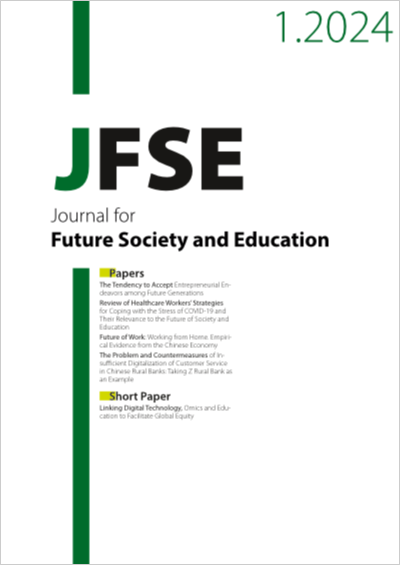Future of Work: Working from Home. Empirical Evidence from the Chinese Economy
DOI:
https://doi.org/10.3991/jfse.v1i1.50657Keywords:
COVID-19, China, Work from Home, WFH, labor policyAbstract
The present analysis elucidates the estimates of the proportion of the non-agricultural workforce that can potentially work from home (WFH) in China. The current analysis explains the estimates of China’s non-agricultural workforce’s ability to WFH to address the inadequate research on remote work adaptability in emerging economies. The considerable demographic and regional disparities in WFH potential we found are noted here. To measure the possibility of WFH, our empirical outcomes revealed that the probability of working remotely from home is higher for youth and middle-aged workers residing in urban areas and belonging to nuclear families. Education is observed to strongly interconnect with working remotely—individuals with higher education are more likely to WFH. In addition, workers working in white-collar occupations have a higher probability of WFH than those in lower-skilled occupations. Further investment in developing information and communication technology (ICT) infrastructure in the economy to improve the productivity of the country’s workforce is an essential area of policy action that emerges from the analysis.
Downloads
Published
How to Cite
Issue
Section
License
Copyright (c) 2024 Junaid Jahangir

This work is licensed under a Creative Commons Attribution 4.0 International License.


